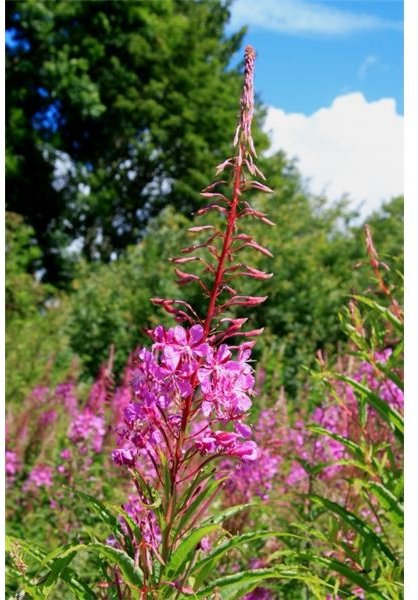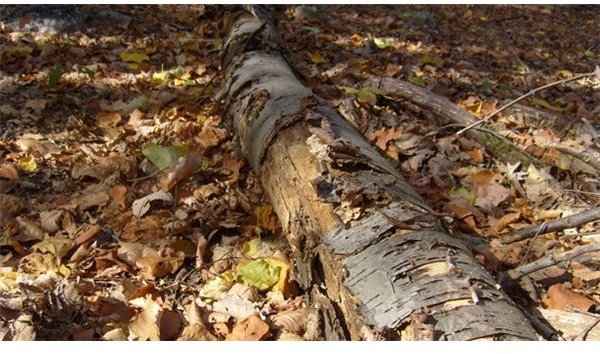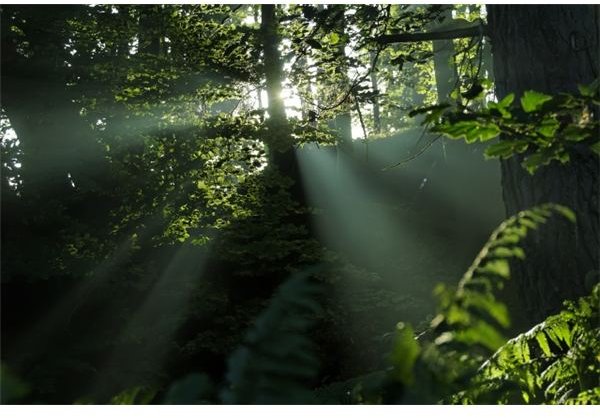How is a Decaying Log Vital to a Forest?
Decaying Log as Habitat
 A decaying log is vital to a forest in that it provides diverse habitats for large and small animals alike. An ongoing long term ecological study in Tasmania has shown that decaying logs of varies diameters and sizes can greatly improve the longitudinal and vertical diversity of forest.
A decaying log is vital to a forest in that it provides diverse habitats for large and small animals alike. An ongoing long term ecological study in Tasmania has shown that decaying logs of varies diameters and sizes can greatly improve the longitudinal and vertical diversity of forest.
Out of all types of animals, birds benefits the most from decaying logs that are still standing, or snags. They use these decaying logs for perching, foraging, and nesting. According to Melissa J. Santiago and Amanda D. Rodewald, Ph.D. of the School of Natural Resources, in Ohio State University, there are 55 bird species that depending on these dead logs as food sources and nesting grounds. These birds are further separated into one of these three categories, primary excavators, secondary excavators, and weak excavators.
Primary excavators are the birds, usually with hard and long beaks that will allow them to excavate from hardwoods, such as eastern hemlocks. Secondary excavators can only excavate from softwoods, such as sugar maple. Weak excavators have small and weak peaks that cannot excavate from woods; therefore, they utilize existing cavities for foraging.
This is just one small example of how decaying log is vital to a forest. There are many more examples in amphibians, invertebrates, mammals and reptiles.
Decaying Log as Nutrients

There are many decomposers in the forest. Decomposers are organisms that serve an important function in the food chain. In a forest, decomposers are readily noticeable on decaying logs in a variety of forms, including fungi and worms. These decomposers will break down decaying logs over time into a series of organic matters. These organic matters are full of important nutrients like nitrogen and phosphate that are both vital and necessary for forest vegetations.
For example, after a severely forest disturbance, which may result in all or most tree species being destroyed, decomposers like fungi and mushroom will be able to flourish under these conditions. They will release enough nutrients which support the subsequent forest succession. Saplings and seedlings of tree species, as well as other forest vegetation like bush and grass will be greatly benefited from this surge of nutrient availability. Therefore, decaying log is vital to a forest through nutrient cycling.
Decaying Log Reduce Soil Erosion

Study of decaying log has shown that decaying log can reduce moister lost from the ground, thus decrease chance of soil erosion. Decaying log would provide shade to the forest grounds. Thus in the event of dry and windy weather condition, decaying log would reduce, and in some cases accumulate soils from the ground. This function of decaying log is vital in the respect that the organic matter in the soil dictate the forest dynamics, thus allow the forest to increase the diversity of tree species, which in term increase the forest biodiversity.
Decaying Log Increase Biodiversity

Why a decaying log matters to a forest can be summed up to one point, biodiversity. Decaying log provide fertile grounds for many vegetation to grow in the forest, thus increasing the biodiversity in a forest. While biodiversity is often overlooked in today’s forest management, it is extremely vital to a forest. Study has shown forest with greater biodiversity will not only be able to resist disturbances, such as acid rain and logging, but also be able to recover quicker from disturbances.
All of these amazing results start with one simple member of the forest, the decaying logs.
Resources:
https://ohioline.osu.edu/w-fact/0018.html
https://www.springerlink.com/content/t4550520nh377451/
Image Credits:
https://www.publicdomainpictures.net/view-image.php?image=1429&picture=log
https://www.freedigitalphotos.net/images/Flowers_g74-Epilobium_Angustifolium_p5241.html
https://www.freedigitalphotos.net/images/Trees_g75-Calmness_p8131.html